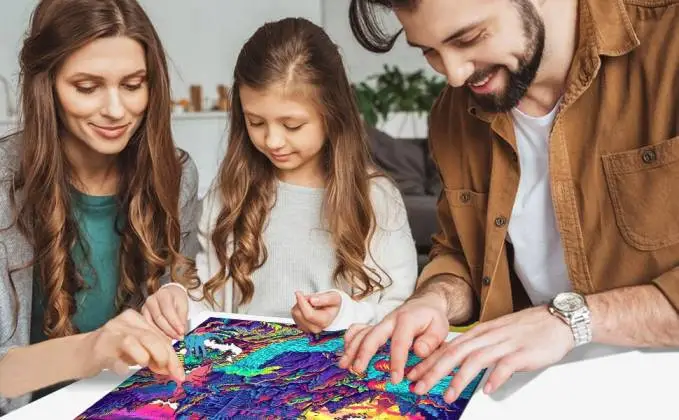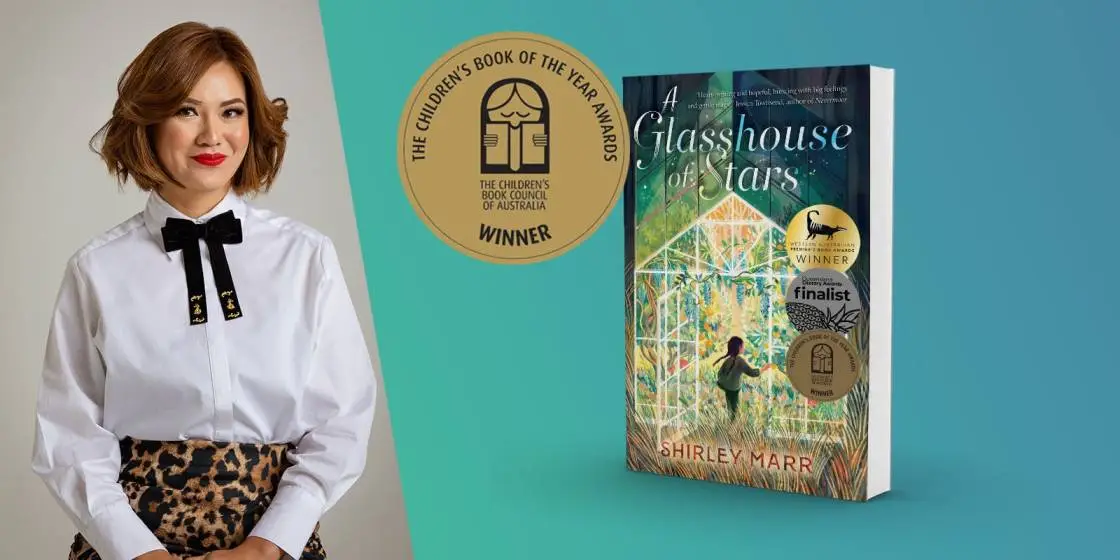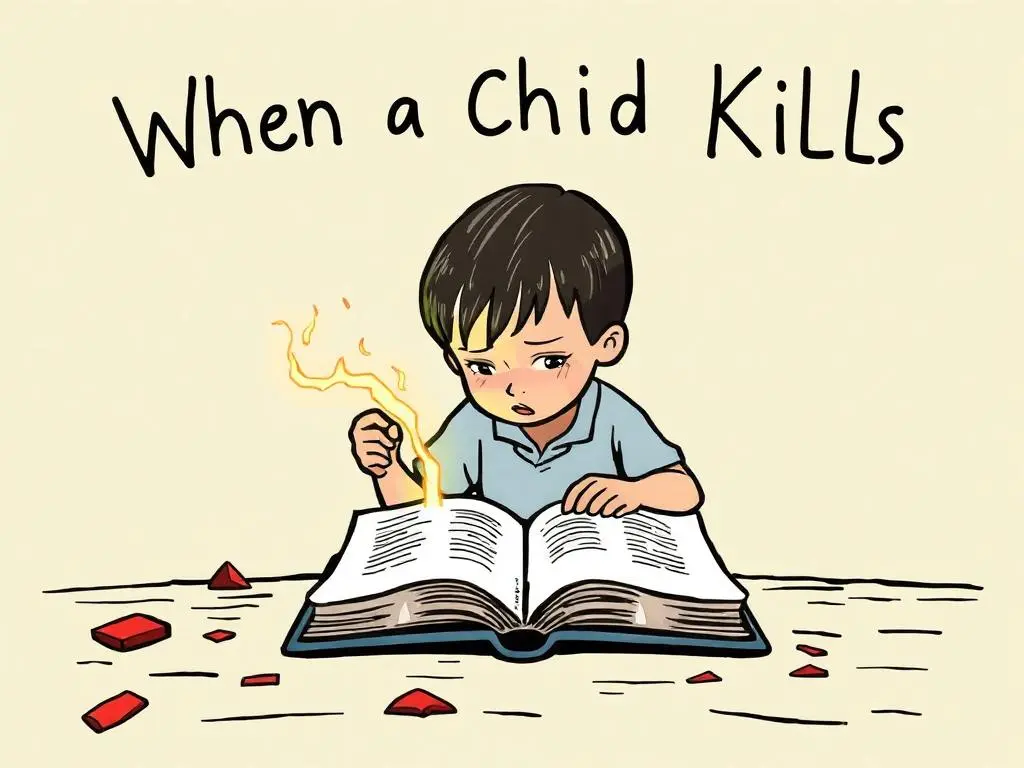Big Friendship, by Aminatou Sow: An Excerpt
We’re now a full decade into our friendship. We’ve lived apart for more than twice as long as we lived in the same city. We still see a lot of each other and talk almost daily, although the years of watching TV on the couch or lingering at happy hour every week feel very far away. The truth is that it’s harder for us to fit into each other’s lives than it once was—and we work together.
In recent years, most of our friends have seen their personal and professional responsibilities expand. Time has never felt more precious or scarce. The experts say that, when it comes to friendship, ages 30 to 50 tend to be a low point. It’s a time when spending unstructured hours with friends, an activity that feels second nature when you’re younger, starts to seem luxurious. Or even indulgent.
In a New Yorker essay published the year we met, the humorist David Sedaris wrote about the “four burners” theory of life priorities. He learned this metaphor from a woman he considered successful and happy. The woman explained that life was like a stovetop: “One burner represents your family, one is your friends, the third is your health, and the fourth is your work.” In this metaphor, your stove can’t run for long with all four burners going. In order to be successful, you have to switch off one of the burners. And if you want to be really successful, you have to pick just two to keep lit. Few of us have the luxury of switching off work. For many people, switching off family is unthinkable. And switching off health is unsustainable, to say the least. So, for most people, the “friends” burner is the first to go.
[ Return to the review of “Big Friendship.” ]
The stove metaphor might describe how some time-strapped adults think of their lives, but it only takes into account your energy output, not what you receive in return from each of these important areas of life. Although the metaphor makes it seem very clear, our lives are not as easily separated into pots that can be placed on separate burners. Extinguishing friendship has consequences for every other aspect of life. Without friends, it’s much harder to get through professional setbacks and weather periods of family transition, like the death of a parent, the arrival of a baby, or an estrangement from a sibling.
As for health, friendship has a bigger impact on a person’s psychological well-being than their family relationships. Its absence has physical consequences too. “During my years caring for patients, the most common pathology I saw was not heart disease or diabetes; it was loneliness,” wrote former surgeon general Vivek Murthy in the Harvard Business Review. “Loneliness and weak social connections are associated with a reduction in life span similar to that caused by smoking 15 cigarettes a day.” He went on to list various other negative effects of social isolation. It’s not just doctors who are concerned. In 2018, the UK government appointed a minister to address loneliness, and Australians called on their leaders to do the same.
Loneliness is not the condition of simply being alone. A more accurate definition, according to the Washington Post, “is the distress people feel when reality fails to meet their ideal of social relationships.” In other words, lonely people don’t necessarily lack friends. Even as concern about “the loneliness epidemic” has increased, the percentage of Americans who say they have no friends has remained consistently tiny, in the single digits. Maybe more people are lonely because they aren’t making time to stay connected with those friends in a meaningful way, over the long term. And social media is playing a role, allowing them to distantly observe people they once truly felt connected to, which opens up the gap between their wishes for those friendships and the more anemic reality: that those friends are not fellow travelers who are sharing their ups and downs, their joys and sorrows. They are friends in name only.
The researcher William K. Rawlins puts friendships in three categories: active, dormant, and commemorative. The active ones are important bonds in your life right now. You are investing in these friends by spending time with them, you know about the day-to-day details of their lives, and you probably see them fairly often. This is the category that Big Friendships fit into. The dormant friendships are ones that were once active but for reasons of circumstance aren’t going strong in a daily way. With dormant friendships—which is probably the category most associated with the dim back burner—there’s the perception that they could be resurrected at any moment, when you’ll just “pick up where you left off.” Finally, there are commemorative friendships, ones that have ended abruptly or faded away, and you don’t expect to ever come back to. It’s easy to see how someone could feel lonely if they have friends only in the dormant or commemorative categories.
You’re allowed to rewrite the rules of a friendship and shift categories at any time. Sometimes the new rules are implied, when one or both of you experiences a big life change that reshuffles your priorities, and you stretch and readjust your expectations in tandem. But sometimes it’s a one-sided shift from active to dormant, and especially if you’ve never talked about it, you can’t be sure that the friendship will still be there waiting when you’re finally ready to rekindle it. As anyone who’s taken time out of the workforce to be a full-time caregiver knows, it’s not always easy to switch a burner back on after it’s been extinguished for a long time.
Perhaps a better question is, how do you prevent a friendship from getting cold?
*
In the earliest phase of our friendship, our ideal was to stay close to each other forever, without a whiff of strife between us. The goal was to reach Oprah and Gayle status, effortlessly walking the line between depending on each other and being fully independent women. Our friendship would always be a refuge of support and love and hilarious elaborate inside jokes, and we would never hurt each other—intentionally or unintentionally.
Some parts of that still sound great, but perfection and ease are no longer our ideals. We’re more interested in resilience. You can’t stay truly connected without some level of misunderstanding or conflict, so the real Big Friendship goal is just to stay in it. Instead of pretending we won’t be challenged, we want the ability to bounce back and heal our inevitable wounds.
There is no autopilot mode for a Big Friendship. You don’t get to sit back, do nothing, and enjoy the benefits of a meaningful relationship—any relationship. But action is especially important to friendship, which carries no familial expectations or marriage license. If you don’t mark it as important and keep it alive, a friendship will not survive.
Just as there are conditions for creating a Big Friendship, there are also some ways to make sure it stays big over many years. Emily Langan, a communications professor at Wheaton College, told us that staying attached to a close friend can be boiled down to three main things: ritual, assurances, and openness.
[ Return to the review of “Big Friendship.” ]
The first, ritual, is because “we need commemorative experiences together,” Langan says. This is why families rely on holidays to bring them together and why wedding anniversaries have endured as a way of celebrating the years of investment in a marriage. “Friendships don’t have the hallmarks,” Langan says. “They don’t have the milestones.” So it’s up to the people in the friendship to create them.
Our friendship anniversary is marked as an annual recurring event on both of our calendars. In previous years, we’ve sent gifts, gone to dinner, and made time for long phone calls to mark the occasion. You’ll find effusive anniversary posts about each other in our social-media archives. We were so busy writing this book that we didn’t celebrate our milestone tenth anniversary, but don’t worry, we’ll do it up right for our 11th.
But not all rituals are big events. Sometimes it’s the smaller practices you have that remind each other of the importance of your friendship. Aminatou relishes waking up every day to a poem from her friend Sarah. It is a reminder of Sarah’s radical softness and kindness, her ability to find something beautiful every day, no matter what is going on in the world. She often tells Aminatou that “soft & lovely is a lifestyle” and now Aminatou knows it’s true. Whenever Ann visits her friend Josh—a bestie of more than 25 years—on her first night in town, they go to the same restaurant. And they order the same thing: two veggie burgers with bacon (Ann violating the terms of her vegetarianism is part of what makes this ritual a ritual) and two glasses of the house red. It’s a private tiny routine exclusive to that friendship, not just a story she and Josh tell, but something they do. Together.
Ritual alone is not enough, though. This is where assurances come in. Even the closest of friends need to assure each other that the friendship is important. Langan says that another key to staying attached is to find verbal and nonverbal ways to tell each other you plan to be there in the future. When the two of us joke about wearing matching caftans and sitting side by side on our Golden Girls–style lanai, it’s more than a joke. It’s an assurance that we plan to be in each other’s lives that long. This happens in shorter-term ways too, like when you pick up the check for dinner and tell your friend, “Don’t worry, you can get me back next time.” One of our biggest assurances to each other was the choice to get matching tattoos, which means we are permanently frog-and-toading. We might never share physical characteristics the way blood relatives do, but we can have matching tattoos, an external sign to the world and to ourselves that we belong to each other.
Sometimes Big Friendship can be assured on a level of paperwork. Most commitments on paper are reserved for family and romantic relationships. Things like marriage licenses, birth certificates, and adoption paperwork have no equivalent in friendship. But there are some ways to declare a friendship in terms that major institutions understand. Years ago, when Ann had a will drawn up, she named her friend Bridget as the recipient of all her worldly possessions. When the lawyer asked her who Bridget was and Ann replied, “My oldest, best friend,” his eyebrows shot up. Aminatou designated her friend Shani as her medical proxy, the person who makes health-care decisions for her if and when she is unable to make them herself. In a friendship, this is about as concrete as assurances get.
And finally, we weren’t surprised when Langan told us that openness is another important way of staying attached in a friendship. The need for transparency arises when one of you is feeling stretch or strain because of a change that’s affecting the friendship. Usually the only way through it is to acknowledge it’s happening. And yes, it’s hard. Especially if a cold silence has become the friendship norm, initiating a classic discuss-the-relationship talk about the ways you’re feeling out of sync in a friendship can feel extremely risky.
“I can call my spouse out on something because the assumption is they have to stay,” Langan says. “In friendship there’s pretty strong fear of abandonment, fear of loss, because there’s nothing holding you in. And so a lot of people are tentative, because you don’t know necessarily that the person’s going to stay with you. Because they don’t have to.” Being vulnerable about all the ways you’re feeling disappointed or unhappy in a friendship also opens up the potential that your friend is going to say, “You know what? I haven’t been present for this friendship because I actually don’t want to be in it anymore.” And what could be more painful than that? No wonder most of us opt for silence and allow the friendship to slide into a dormant or commemorative category.
For us to begin addressing our own friendship-threatening problems, the feeling of our silence had to get so bad that we were sure we had nowhere to go but up. That was what it took to force a transparent conversation. Now it seems pretty clear to us that if we’d never exposed our troubles to the light, they would have eaten away at the friendship until there was nothing left. That’s not to say the process has been easy. But we are, as we said to each other in many difficult times, still here for each other.
Langan adds that being transparent also means opening up about how important someone is to you as a friend—making sure you are saying to them that you value their presence in your life. Don’t just occasionally think of your friend fondly. Tell them that your life would lose meaning if they disappeared from it. Tell them you love them. Tell them exactly why you want to hold on to this friendship and make it last for the long haul.
*
You don’t want a friendship to be resilient just so it endures. You want a big, resilient friendship so you, as a human, can be resilient when you’re presented with the horrible stuff that life will most definitely throw your way. We think of Big Friendship as a way to deepen and diversify the community of support that will see you through the hard times. If you prioritize only your romantic relationships, who is going to hold your hand through a breakup? Relying on your spouse to be your everything will definitely undo your marriage. No one human can meet your every single emotional need. If you only prioritize your kids, what happens when they’re grown and living far away, wrapped up in their own lives? Or if you only prioritize work? Wow, that’s too sad to even contemplate.
Friendship can definitely survive, simmering on the back burner, in a way that some other relationships can’t. But not indefinitely. What’s in it for your friend if you are not equally invested? If you tune into the friendship again only after a divorce or once your kid is in preschool? Absence might not make the heart grow fonder. You run the risk of realizing that there’s not as much there as you remembered.
We give relationships meaning by the amount of attention and work we put into them. Just as we can choose to leave our friendships unattended and hope they stay warm, we can also choose to elevate our most important friendships to a status equal to marriage, family, and career. We can choose to keep them active, to keep investing in them.
There are big rewards if we do. Friendships become more important as people age, according to a 2017 study—so much so that even the researchers were shocked. “I went into the research sort of agnostic to the role of friendship,” the study’s author, the psychology professor William Chopik, told Time magazine. “But the really surprising thing was that, in a lot of ways, relationships with friends had a similar effect as those with family—and in others, they surpassed them.” He noted that, by old age, superficial and circumstantial friendships have faded away. The friendships that last till the end tend to be “the really influential ones”—the Big Friendships.
Friendship is a real-deal insurance policy against the hurricanes of life—and there’s social-science evidence that the hard stuff seems less difficult with a good friend by your side. In one study, participants were asked to assess how steep a hill was. Those who participated with a friend said the hill seemed less daunting than people who participated alone. A Big Friendship can hold you when you’re worried that everything else is falling apart. It can be a space of validation when you feel alone in the world. It can provide the relief of feeling seen without having to explain yourself in too many words. And it offers the security of knowing that you won’t have to go through life’s inevitable challenges alone.
[ Return to the review of “Big Friendship.” ]




